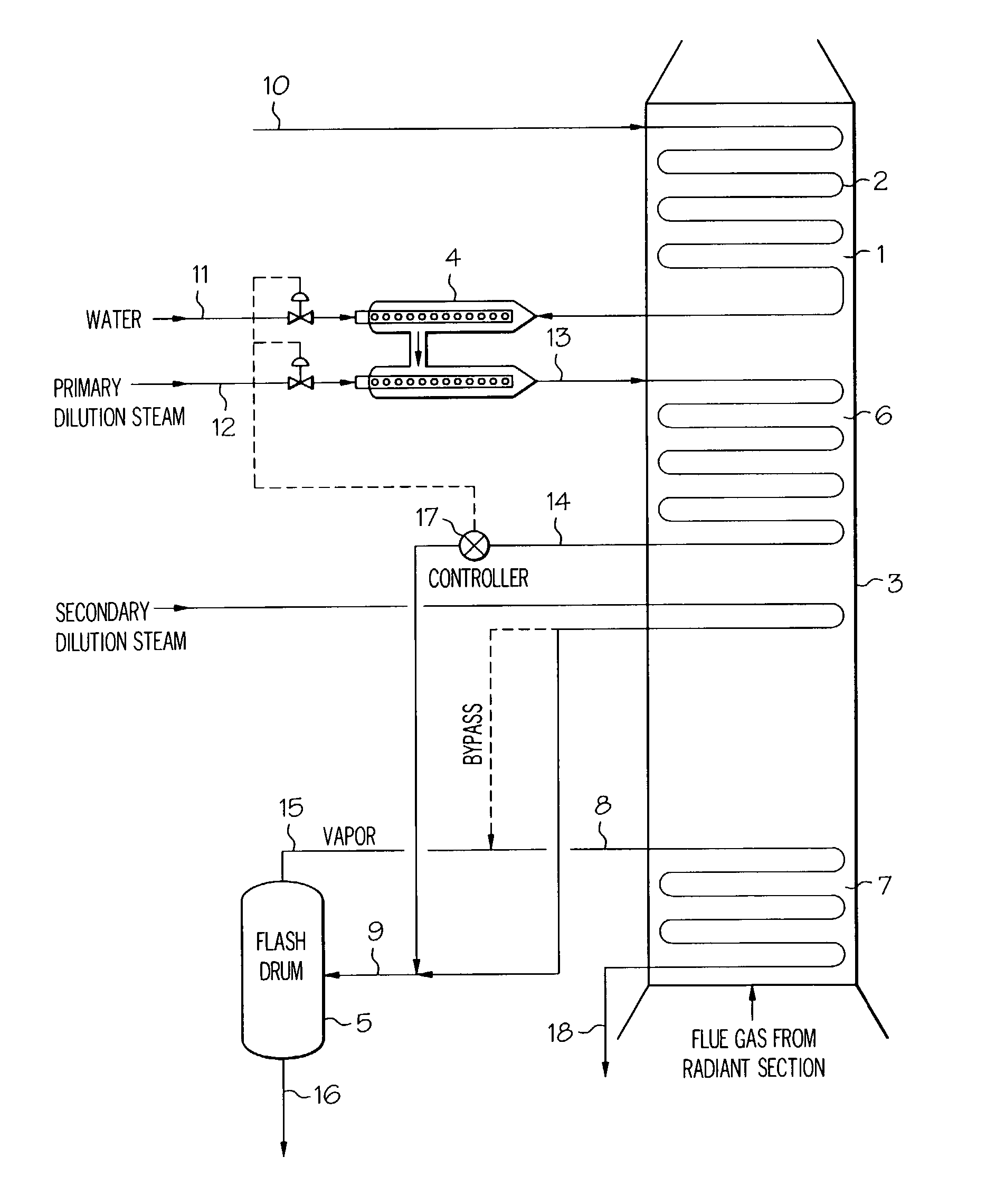Converting mist flow to annular flow in thermal cracking application
a technology of annular flow and mist stream, which is applied in the direction of hydrocarbon oil cracking process, thermal non-catalytic cracking, organic chemistry, etc., can solve the problems of contaminated naphthas with crude oil, crude oil, coking problems, etc., and achieve the effect of reducing the flow velocity of the mist stream
- Summary
- Abstract
- Description
- Claims
- Application Information
AI Technical Summary
Benefits of technology
Problems solved by technology
Method used
Image
Examples
example 1
[0057]The vapor / liquid separation efficiency of a flash drum separation is highly dependent on droplet size. Stoke's law teaches that the terminal velocity of a drop or a particle is proportional to its diameter squared. Hence, if a very fine mist enters a flash drum, the upward gas velocity will be greater than the terminal velocity of the droplets causing entrainment. Extensive coalescing of droplets into annular flow produces very large droplets which separate easily in a flash drum.
[0058]Annular flow can be effected by reducing the bulk flow velocity and allowing sufficient time and friction for coalescing of droplets. After the bulk velocity is reduced, roughly 100 pipe flow diameters are required to coalesce drops. Air / water flow tests were conducted to determine how to produce annular flow in less than 100 pipe diameters. Two 6 HP blowers produced a high velocity gas in 2″ ID pipe. The air from the two blowers combine in a Y-fitting and flow into the 2″ ID clear pipe. Just be...
PUM
 Login to View More
Login to View More Abstract
Description
Claims
Application Information
 Login to View More
Login to View More - R&D
- Intellectual Property
- Life Sciences
- Materials
- Tech Scout
- Unparalleled Data Quality
- Higher Quality Content
- 60% Fewer Hallucinations
Browse by: Latest US Patents, China's latest patents, Technical Efficacy Thesaurus, Application Domain, Technology Topic, Popular Technical Reports.
© 2025 PatSnap. All rights reserved.Legal|Privacy policy|Modern Slavery Act Transparency Statement|Sitemap|About US| Contact US: help@patsnap.com



